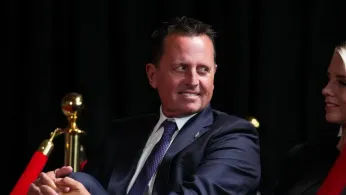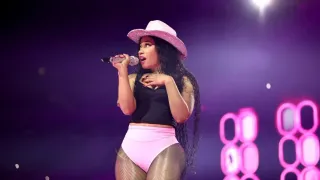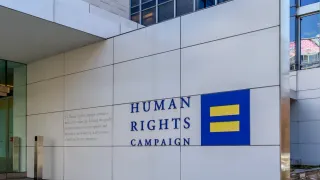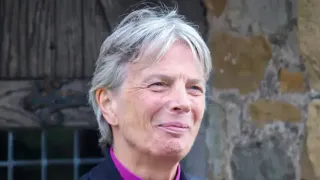
Nov 13
Diva Drama at the Kennedy Center: Ric Grenell, Pride Cancellations, and the Future of Queer Art in America
READ TIME: 3 MIN.
If you’ve ever sashayed down the red carpet at the Kennedy Center Honors, you know this isn’t just another venue—it’s a living testament to American culture, where queer creators have always found space to shimmer. But in 2025, the Kennedy Center has become something else entirely: the epicenter of a bitter culture war, with former diplomat Ric Grenell as its controversial new president, handpicked by Donald Trump in a move that sent shockwaves across the arts world .
Within weeks of Trump's takeover, Grenell replaced dozens of board members with political loyalists, fired forty staffers, and watched as others resigned in protest. The result? A Kennedy Center in crisis, hemorrhaging talent and credibility . Even more damning for queer audiences: the sudden cancellation of"Tapestry of Pride," a multi-week celebration of LGBTQ+ voices in theater and classical music, without so much as a press release or official explanation. Award-winning artists like Rhiannon Giddens and composer Nico Muhly pulled out of scheduled shows in protest, while playwright Jeremy O. Harris cut to the heart of the matter: “This is not about patriotism—it’s about silencing diverse voices,” Harris declared .
For many LGBTQ+ creators, the Kennedy Center’s abrupt shift feels like the cultural equivalent of a cold shower. Once a reliable ally for queer programming, the institution under Grenell now stands accused of ideological censorship and cultural regression . In the words of American Theatre contributor Nadia Foster, “When an institution cancels LGBTQ+ programs with no explanation, that sends a chilling message” .
And it’s not just programming. The Kennedy Center’s Social Impact team—responsible for equity initiatives and outreach to marginalized communities—was dismantled, with seven employees laid off overnight. Grenell’s response? He reportedly referred to their work as “DEI bullshit” . The message to queer staffers and audiences alike: civility is fine, as long as you stay in your lane.
That contradiction has not gone unnoticed. Grenell told Politico that he and the Trump administration offer “voices of tolerance,” while simultaneously erasing bisexual and transgender Americans from federal language, memorials, and museums . It’s a paradox familiar to many in the LGBTQ+ community—calls for “decorum” masking deeper efforts to sanitize queer presence from public life.
The response from queer creators and their allies has been fierce. Staff voted to unionize, seeking protection from what they described as an administration intent on “dismantling mission-essential departments and reshape our arts programming” . Donors, too, have withdrawn support—most notably David M. Rubenstein, who has donated over $100 million to the Center, prompting fears of a financial crisis .
And then there are the audiences. At an NSO concert in March, Vice-President JD Vance was met with a “sustained and unprecedented chorus of loud booing.” The message was clear: queer and allied audiences are watching, and they won’t be silenced .
The Kennedy Center was envisioned as a “living memorial” to President John F. Kennedy—a place where all Americans could access the transformative power of art. But today, critics argue the Center has become a monument to political power, with Trump and Grenell using its prestige to reward supporters and punish dissenters . House Republicans even voted to rename the Opera House after Melania Trump, a move that left many in the arts community—queer and otherwise—feeling erased .
The resignation of long-serving president Deborah Rutter, who cited “irreconcilable differences” with the new leadership, marked another loss for diversity and inclusion at the Center . The message to staffers: “My presence was no longer institutionally supported... I could no longer carry out tasks that hurt my own communities, that hurt myself,” wrote one former employee .
For queer audiences, the Kennedy Center drama isn’t just palace intrigue—it’s a bellwether for the future of LGBTQ+ representation at America’s most prestigious cultural institutions. The recent events raise urgent questions: Who decides which Americans get to make and see art? Can we trust our institutions to fight for equity when their leadership is beholden to political interests?
The answer, as always, lies in the community. Whether through union organizing, donor activism, or simply showing up and making noise (literally, in the case of the NSO concert), queer artists and audiences continue to demand visibility, authenticity, and inclusion. As Jeremy O. Harris put it: “When an institution cancels LGBTQ+ programs with no explanation, that sends a chilling message” .
The fate of the Kennedy Center may be messy, but the resolve of the LGBTQ+ community is anything but. In the words of LBJ, whose dream for the Center was to “enrich the life of our people,” the work ahead is clear: to continually expand the definition of “our people”—and make sure queer voices are never left out of the story .






